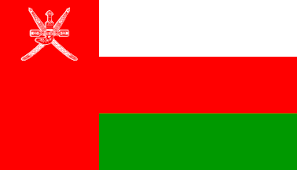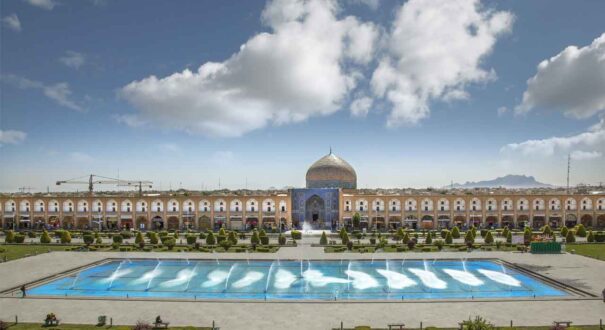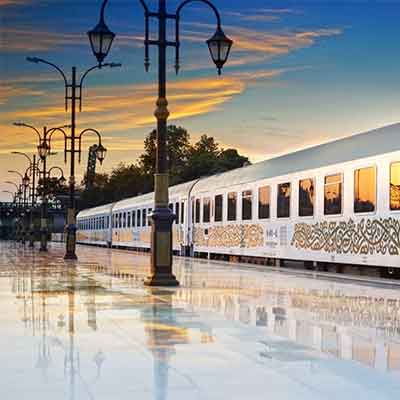
- Home
- Locations
- attractions
- Naqsh-e Jahan Square
Naqsh-e Jahan Square
description
Naqsh-e Jahan Square, the Second Largest Historical Square in the World
Naqsh-e Jahan Square is the most beautiful historical square of Iran. This square, situated at the center of Isfahan, is a Safavid era landmark. It is among the first sites registered in the National Heritage of Iran, and one of the first UNESCO-listed sites. It was registered in UNESCO IN 1979. After the Iranian revolution, the official name of this square was changed to Imam Khomeini Square (Imam Square).
The History of Naqsh-e Jahan Square
In the reign of Shah Abbas I, by moving the capital from Qazvin to Isfahan, a decision was made on constructing a large square. This square that was constructed in the middle of Naqsh-e Jahan Garden, was named New Square. Naqsh-e Jahan is a rectangular square which is 160 meters wide by 560 meters long.
Naqsh-e Jahan Square is the second largest square of the world after “Tiananmen Square” in China. It is home to a two-story bazaar that include 200 stalls. A high variety of Isfahan’s handicrafts is offered in this bazaar.
Ali Qapu Palace, Abbasi Jameh Mosque, Sheikh Lotfollah Mosque and Qeysarieh Gate are four landmarks surrounding the square. Actually, it is based on Iranian architectural tradition including bazaar (economical element), mosque (religious element) and royal palace (power element).
Ritual Ceremonies and National Games in Naqsh-e Jahan Square
In the past, this square was the place that people gathered to hold different ceremonies. For example, “royal guards march”, “fireworks”, “national celebrations” and “polo”. Two gates on the either sides of the square are a symbol for these competitions.
According to Tavernier, the French traveler, shooting was among the competitions that were held in this square. The winners were granted great rewards such as gold cup, which indicates the importance of these competitions. It is mentionable that shooting and riding are of the important sports that have highly been recommended in Islam.

In the shooting competition, the horse rider had to aim the cup that had been placed on a pole. Tavernier witnessed that the Safavid king succeeded to hit the target three times. The participation of the king in this competition demonstrates show how much it was popular at the time.
Today, Imam Square function as a gathering place in which statesmen present their speech.
After the Iranian Revolution, Naqsh-e Jahan Square was the site of Friday prayers and religious ceremonies. Completing the construction of a new building to hold Friday Prayers, this rite is not held in the square anymore.
Today, some ceremonies such as symbolic polo competition and Iranian New Year (Nowruz) Festivals are held in this place. We can also describe this square as a heaven in in the heart of Isfahan. It is one of the main places that people meet each other.

The Landmarks Surrounding Naqsh-e Jahan Square
In the following, we introduce the monuments around this square; Abbasi Jameh Mosque, Sheikh Lotfollah Mosque, Ali Qapu Palace and Qeysarieh Gate.
Sheikh Lotfollah Mosque, a Masterpiece Decorated with Tile
Since we will discuss this Safavid-era architectural masterpiece in a separate article, we just describe the exterior of this mosque in this text.
Unlike the turquoise domes of Isfahan, this mosque features a creamy dome. It is decorated with mosaic and includes some verses of Quran. The inscriptions mostly contain verses of Quran, the holy book of Muslims.
The dates inserted on the inscriptions indicate its multiple reconstructions. The most important one is an inscription that dates back to 1928 and is attributed to Reza Shah Pahlavi.
Unlike the principles of Persian architecture, the exterior of the mosque has no minaret and courtyard. The name and architectural elements of the square indicate it was constructed to function as mosque and school. During the history, it has been known as “royal mosque” and “women mosque”.

Ali Qapu Palace, the Safaevid-era Royal Palace
Ali Qapu Palace was constructed in Naqsh-e Jahan Square in the 17th century, when Isfahan was announced as the Safavid capital. In regards with the name of this palace, Shah Abbas imitated the palace of the Ottoman Sultan to catch their attentions. This huge monument was constructed by the order of Shah Abbas I as the governmental base.
Ali Qapu Palace is the tallest building of Isfahan from which you have a view to the city. The terrace of the third floor which includes wooden poles and a copper pool, is the most splendid part of this six-floor building. This terrace overlooks the square and includes a reception hall that functioned to reside the king and serve special guests.
36-meter-high Ali Qapu Palace is a multi-facet construction which has different looks from each side. Featuring a protruding terrace, this palace has two stories from the front side. While it has 5 stories from back side. In addition, due to the water resource in the north and connective stairways in the south, it has four stories from both sides. Ali Qapu is an entrance to Safavid royal palaces and the structures located in the garden. This construction was also where the king and courtiers resided.

Abbasi Jameh Mosque, the Calligraphy Museum of Naqsh-e Jahan Square.
In this part, we refer briefly to Abbasi Jameh Mosque as the most important Safavid-era landmark. Although we believe that the words are not able to describe it, we discuss this monument in a separate article.
Abbasi Jameh Mosque, located on the southern side of Naqsh-e Jahan Square, has 4 minarets. This mosque is a treasury of Iranian masterpieces. Since portraiture is forbidden in Islam, this mosque exhibits a collection of Safavid-era calligraphy artworks.
Due to the aesthetic importance of Naqsh-e Jahan square, Shah Abbas ordered on completing the entrance as the first level.
The construction process continued to the end of Shah Abbas and his successor’s life. This mosque had a special position in the Safavid court. After the construction process of this mosque, Eskandar Beik Torkaman, the historian and personal advisor to the king, said: “the second Kaaba was constructed”.

The Old Gate of Isfahan
This gate is a historical entrance to the commercial world of the Safavid era. In addition to a splendid architecture, this gate features wonderful paintings drawn by Reza Abbasi.
One of the frescoes that depict the king at war with the Uzbeks, almost looks fade. But the facing image, depicting the king in the hunting ground, is completely preserved.
On top of this gate, you can find mosaic works, considered the most important part of the gate. These mosaic works, created by the artists of Isfahan, represent a creature with human head, lion body and dragon tail that is aiming an arrow. This creature was a symbol of Sagittarian. The eastern historians believe that Isfahan was founded in Sagittarian.

Visiting Naqsh-e Jahan Square, a Different Experience at the Heart of the Orient
On your trip to Iran, don’t miss this square. In all Iran classic tours and combined tours, you can visit this square. You can click here to view Isfahan-included tours offered by 1001 Nights Tours. To know more about the other monuments of Isfahan, click here.
Fell free to share your opinions in regards with special and thematic tours via email.















